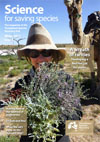Latest News
-
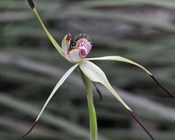
National review and workshop put spotlight on plant translocation
Tue, 08 Aug 2017Experts from across the country recently met to review the national guidelines for plant translocation. The important conservation technique is much more than just planting trees, a point well illustrated by work to save the Mellblom's Spider-orchid which has hinged on wasps.
-
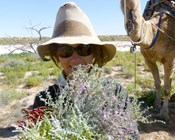
A Red Hot List for threatened plants
Mon, 07 Aug 2017Around 5% or 1150 of Australia's plants are endangered or critically endangered. Dr Jen Silcock is developing a Red Hot List to identify the Australian plants at greatest risk of extinction and what we can do about it.
-
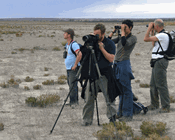
Citizen, where art thou?
Mon, 07 Aug 2017At a minimum, citizen science can get people thinking about nature, but it can achieve much more as well. Dr Rochelle Steven talks about what we can gain from citizen science programs and the development of a framework that maximises positive impacts for nationally-listed threatened species.
-
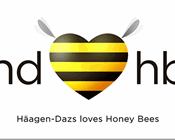
Doing the business for biodiversity
Mon, 07 Aug 2017Finding opportunities in business that are good for biodiversity and where biodiversity can be good for business, could be the key to creating positive outcomes for threatened species and businesses alike.v
-
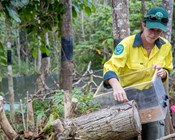
New territory for Christmas Island reptile conservation
Mon, 07 Aug 2017Two of the most successful captive breeding programs in Australia’s history have brought the Lister’s gecko and blue-tailed skink back from the brink of extinction. The TSR Hub is now working with Parks Australia to investigate options for the reptiles beyond captive breeding.
-
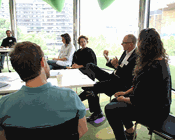
Seize the day
Mon, 07 Aug 2017A unique business-research summit was staged in the heart of Melbourne earlier this year to identify and explore emerging business opportunities that also have benefits for threatened-species conservation.
-
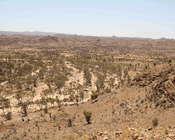
What's the overlap
Wed, 07 Jun 2017Indigenous lands are important when it comes to conserving threatened species. The first step in identifying viable options for partnerships is to identify the overlap between Indigenous land and biodiversity value. ???? (Jaana might like to reword?)
-
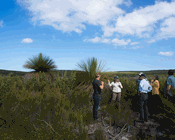
In search of the KI dunnart – Island conservation after the feral cat
Tue, 06 Jun 2017A feral cat eradication program on Kangaroo Island, commencing in August 2017, will endeavour to provide an insight into the status of the endangered KI dunnart. It is hoped the program will secure a future for the dunnart along with other threatened species on the island.
-
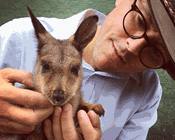
Innovative partnerships to fight extinction
Tue, 06 Jun 2017Having already met the majority of first year targets of the Threatened Species Strategy, we are now focused on new and innovative partnerships to help achieve ambitious Year 3 and Year 5 targets. Read about our innovative initiatives for 2017.
-

The fire, the fox and the feral cat
Tue, 06 Jun 2017Does the loss of protective understory after prescribed forest fires, make it easier for foxes and feral cats to hunt native mammals?
-

The Niche-Reduction Hypothesis: Rethinking how we manage threatened species
Thu, 25 May 2017Focusing on the rate and magnitude of species declines can miss important aspects about why species are declining, but this information could be crucial for effective management.
-

Researcher Profile: Dr Damian Michael
Thu, 25 May 2017Dr Damian Michael has worked with over 500 landholders to help conserve threatened species and ecological communities. He talks about his upbringing, career and the satisfaction he gets from working with farming communities and volunteer groups.
-
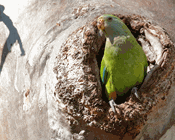
Learning from a failed biodiversity offset
Wed, 24 May 2017While a $213,000 nest box program failed the threatened species it was designed to attract, there is much we can learn from it to improve future offset policy and projects.
-
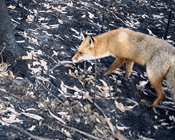
Fire leads to spike in invasive predators
Tue, 23 May 2017New research, just published in Journal of Mammalogy, has observed a dramatic increase in feral predators after a prescribed burn in Victoria’s Otway Ranges.
-
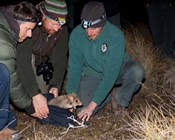
A bettong in the bush is worth…
Mon, 13 Mar 2017Will Batson explains why a bettong in the bush is worth two in the hand; the successful reintroduction of bettongs within two predator-free fenced nature reserves in the ACT; and a new project to establish bettongs outside fenced reserves.
-
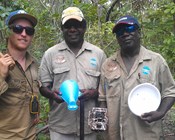
Melville Island mammal declines fought with fire
Mon, 13 Mar 2017Native animals are declining on Australia’s second largest island with brush-tailed rabbit-rats, black-footed tree-rats and northern brown bandicoots the worst hit.
-
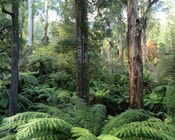
Accounting for ‘a home among the gum trees’
Sun, 12 Mar 2017Threatened species are often found in landscapes where there are competing interests and views on how things should be managed. Who are you going to call to deal with these tensions? Ecologists? Engineers? Economists? In the Victorian Central Highlands TSR Hub researchers have called in the accountants.
-
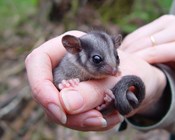
Leadbeater’s Possum on the brink
Sun, 12 Mar 2017The current Regional Forest Agreement (RFA) for Victorian Mountain Ash Forests will expire in the middle of the year. The ASH sawmill has requested access to log native forests for the next 26 years. What would this mean for the ecology of the forests and its most threatened resident, the Leadbeater’s Possum in particular?
-
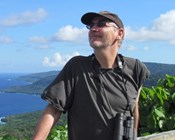
Preventing extinction – why we should
Sun, 12 Mar 2017Three vertebrate species became extinct in Australia during the last decade, but these losses had no perceptible impact on our nation’s economy and weren't noticed by most people. Given this, what are the arguments for seeking to prevent the loss of species? TSR Hub Deputy Director John Woinarski responds to this question with ten justifications.
-
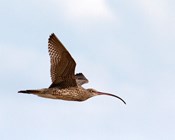
Recovering the far eastern curlew
Sun, 12 Mar 2017The far eastern curlew, one of the world’s largest migratory shorebirds, has declined dramatically in the last 20 years. The bird is in trouble on multiple fronts and central to addressing these challenges is a better understanding of its habitat needs and international cooperation.
-
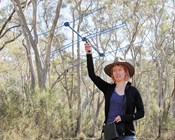
Researcher Profile: Natasha Robinson
Sun, 12 Mar 2017Natasha Robinson believes that for research to have meaning it needs to be applied and have impact. Natasha is a TSR Hub Research Fellow at ANU, working on monitoring and adaptively managing threatened species.
-
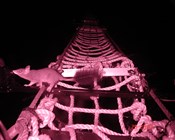
Threatened species in city spaces
Sun, 12 Mar 2017376 EPBC-listed threatened species have some part of their distribution in at least one Australian city or town, and for at least 30 of those species, that’s the only place they are found. If we are to have any success at securing their futures, we need to come up with effective strategies for their conservation in our urban spaces.
-
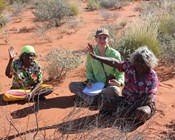
Designing a best-practice bilby monitoring program for Martu rangers
Thu, 15 Dec 2016The Martu people of the Western Desert are working to protect one of the last strongholds of the iconic bilby. TSR scientists are hoping they can help in this work by designing a monitoring program that Martu rangers can use to better understand bilby population trends over time. Anja Skroblin from the University of Melbourne describes what’s being done.
-
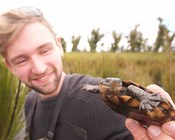
Editorial: It is people who save species
Thu, 15 Dec 2016Strong collaborations with conservation policy makers, planners and on-ground practitioners ensure that research is addressing on-ground needs. Our research program also includes fascinating work on social and economic opportunities to conserve threatened species, including how best to engage people and communities and how traditional Indigenous and western knowledge systems can work together to better inform conservation actions.
-
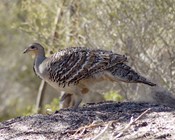
Best-practice governance for threatened species recovery teams
Wed, 14 Dec 2016For most people, threatened species recovery is about doing something to save a threatened species – planting habitat trees, translocating individual animals and managing threats like foxes and cats. The ‘doing’ is important but what is often not seen is the organisation behind the doing. How are decisions made? Which bits of the ‘doing’ is given the priority? And how do we make sure we ‘learn’ as we ‘do’? The TSR Hub is working with the Australian Government on drawing together what we know about best practice for recovery teams.
-
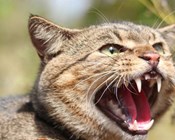
How many cats?
Wed, 14 Dec 2016Conservation management works best when it is based on robust evidence. If we’re trying to manage a threatening factor, such as a pest or a weed species, we really should know how many there are, how they’re distributed, and how many we should control to make a difference. Feral cats are constantly cited as a major threat to Australia’s native wildlife, so TSR researchers look at how many are out there.
-
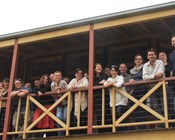
Making threatened-species monitoring count
Wed, 14 Dec 2016Monitoring the status and trends of threatened species is vital to informing management and policy decisions. And yet, monitoring of threatened species rarely occurs, and when it does - it is usually not carried out effectively. Why is this, and how can we remedy the situation? This was the central issue underpinning a two-day workshop that brought together 30 conservation managers, policy makers and scientists from all over Australia.
-
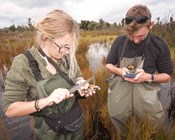
Saving the western swamp tortoise
Wed, 14 Dec 2016The western swamp tortoise has all the ingredients of a fairy tale. It’s the Goldilocks of tortoises needing water that isn’t too hot but isn’t too cold to survive. It’s the Rip Van Winkle of reptiles in that it seemed to vanish from sight for over 100 years during which time it was thought extinct – but then it was rediscovered. And it’s the Houdini of endangered wildlife in that it came close to oblivion in the 1980s with numbers fewer than 50 but, thanks to concerted efforts at recovery, it escaped extinction and there are over ten times that number now.
-

The governance of saving species
Wed, 14 Dec 2016At the end of the day, species are saved by people. The way these people organise themselves - like the rules they follow, the networks they form, the way they make decisions - is critical to the success of any species recovery program. The way people organise themselves is known as governance and Angela Guerrero is working with the TSR Hub to understand what forms of governance help a recovery effort (and what forms may hinder it.)
-
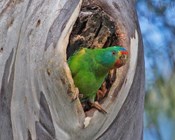
Addressing a swift-parrot housing crisis
Wed, 07 Dec 2016Swift parrots are in trouble. Their numbers have been in decline over many years. The loss of nesting habitat has been an important driver behind this trend but in recent years it’s been discovered sugar gliders have made the problem worse by invading their tree hollows and eating adult and baby birds. However, there is a glimmer of hope. Experiments with purpose-built nest boxes and chainsaw carved tree hollows have this year demonstrated that swift parrots can use them for breeding.
-

Our first research showcase
Wed, 07 Dec 2016Over 100 policy-makers, land managers and researchers gathered at the National Portrait Gallery’s Liangis Theatre to engage with key findings from across the Hub’s six research themes. Some of our newest early career scientists presented alongside leading international researchers. Presenters grappled with how research could be put to most effective use in protecting and recovering Australia’s threatened species.
-
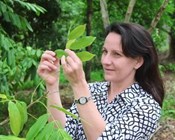
Award will enhance the reputation of conservation science
Mon, 14 Nov 2016 -
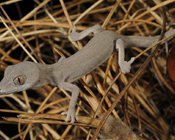
Developing a policy for the unknown
Mon, 14 Nov 2016Scientists suspect that hundreds of thousands of Australian species remain undiscovered or poorly known and that many of these species are at as great a risk of extinction as those formally listed as threatened. Poorly-known but imperilled species present a formidable challenge to researchers and conservation managers for many reasons.
-
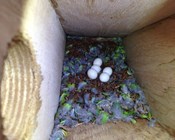
Hub researchers in the news
Mon, 14 Nov 2016October was a busy month for TSR Hub researchers in the media, with several researchers appearing in the news – both online and on the airwaves.
-
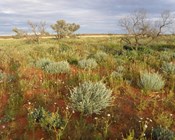
Plant conservation a talk in the park for Hub researchers
Mon, 14 Nov 2016Three TSR Hub researchers will present their work to the 11th Australasian Plant Conservation Conference (APCC) at the Royal Botanic Gardens Victoria, Melbourne this week.
